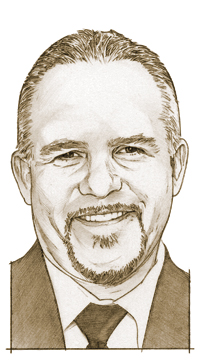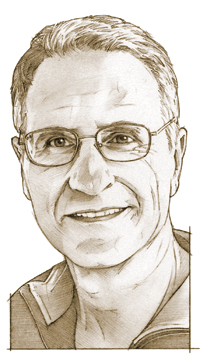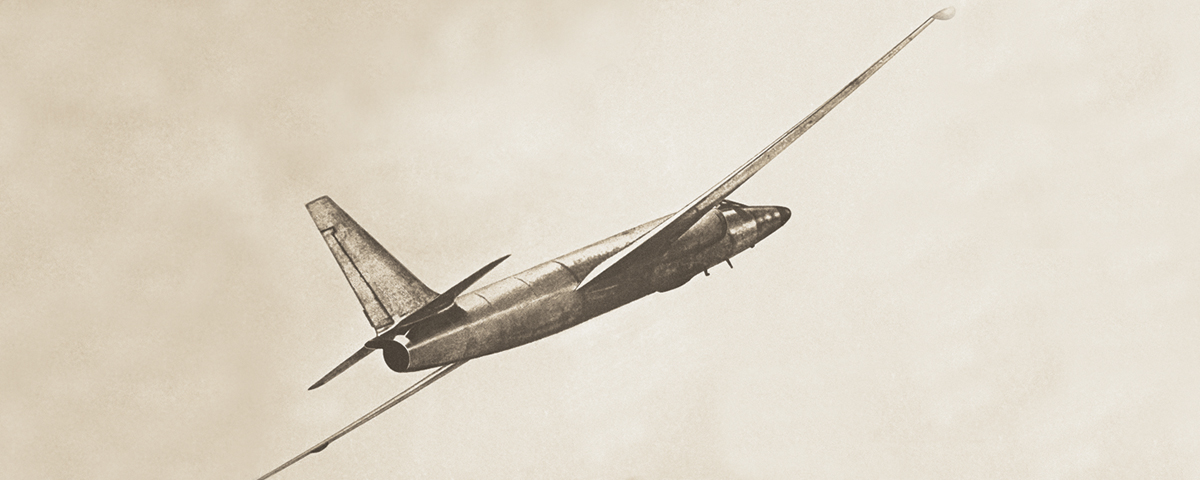In October 1962 the world held its breath as the United States and the Soviet Union faced off over nuclear missiles in Cuba. In the 2018 book Above & Beyond: John F. Kennedy and America’s Most Dangerous Cold War Spy Mission authors Casey Sherman and Michael Tougias recount the vital reconnaissance missions flown by U-2 pilots to discover just what was going on 90 miles off the southern tip of Florida. The book details the pilots’ desperate efforts, the very real dangers they faced, U.S. plans for a massive land invasion of Cuba and just how close the world came to nuclear war. Sherman and Tougias also co-wrote the 2009 best seller The Finest Hours: The True Story of the U.S. Coast Guard’s Most Daring Sea Rescue, which was made into a 2016 film.

What drew you to write this true-life thriller?
Sherman: I don’t think history has given the U-2 pilots much thought. I was always interested in the Cuban Missile Crisis as a historical event, simply because my father was a Marine stationed in south Florida during those 13 days. Had President John F. Kennedy launched an invasion—which would have been the largest land invasion since D-Day—my father would have been a part of that first wave hitting the shores of Cuba. So the likelihood is great we wouldn’t be having this conversation today. I really wanted to tell a very intimate story about the people who were thrust into action while the world was waiting to see what was going to happen. I had heard about U-2 pilot Chuck Maultsby, who became lost over the Soviet Union on October 27. But I didn’t think it had enough narrative to hold a whole book and needed another story to buttress it. Then I discovered Rudy Anderson was shot down over Cuba on the same day. I realized both men got into these situations—one deadly, one death-defying—at almost the same time. Then I knew this was the story we absolutely had to tell.

How were you able to get the inside story?
Tougias: I don’t think many people know Rudy Anderson was shot down and killed. I thought that was an interesting angle, but I could only do the book if I could find a U-2 pilot to work with. I was blessed that I was able to make contact with Jerry McIlmoyle. He’s the pilot whose plane was almost hit by surface-to-air missiles, and it was covered up. Someone at a very high level did not want the news to get to Kennedy, because of fear he might say, “OK, that’s enough of the U-2 flights—we are going to lose a guy.” They destroyed the intelligence report.
Was Kennedy up to the task in 1962?
Sherman: Kennedy is the other critical character in our book. I made the correlation that Kennedy’s pause in the most critical moments during those 13 days stemmed from the fact he was the only president at the time who had experienced combat firsthand. As the commander of a PT boat in the Solomon Islands during World War II he had seen the enemy up close and personal. Losing two crew members in combat also had a big impact on him.
How extensive were plans for an invasion of Cuba?
Tougias: They had all the people in place—more than 250,000 Marines and soldiers. They had the transport ships ready. The Joint Chiefs of Staff advised Kennedy to do a full-scale invasion—and sooner rather than later. The president was under tremendous pressure to act. He would put them off for another day to see if he had a little more time. The Joint Chiefs kept saying surprise is the key. But Kennedy kept waiting to see how events would play out.
What surprised you most during your research?
Tougias: I always thought Soviet Premier Nikita Khrushchev was this real hothead. At the end of the research I did not have that opinion. In fact, if he hadn’t had a cool head, who knows where this could have gone. I spoke to his son Sergei, and he said when Anderson was shot down, that was the moment his father thought things were spinning out of control. I thought that was remarkable, because J.F.K. told his brother Attorney General Bobby Kennedy that was his biggest fear. Some miscalculation, some incident would take it out of his hands and into the hands of somebody on the ground or in sub or on a ship.
How did Kennedy’s health affect his thinking?
Sherman: We were very open with regard to what Kennedy was going through physically at the time, and about the combination of prescription drugs he was taking for Addison’s disease and his back pain. That kind of cocktail might have paralyzed most folks, but in many of the sessions with the Joint Chiefs of Staff he was the calmest and clearest voice in the room. I hope people will look closely at Kennedy’s decision-making in this particular moment, which is the most intense moment in the history of humankind—and I’m not being glib about that. After researching it and understanding how close we came to nuclear war, I think J.F.K. deserves to be looked at differently now, as a real critical thinker and true leader.
What were the spy planes like?
Tougias: The U-2s were very interesting. Jerry McIlmoyle showed me his model and how it worked. Each one was a little different, because they’re basically handmade. No weapons and very little protection. When Rudy Anderson was shot down, it could have been just one little piece of shrapnel that hit his aircraft in the right place, and down it comes. I saw a picture of the crash and was surprised how intact it looked after falling 13 miles. There should have been nothing left. But Jerry said they were so light, it was like a leaf falling from a tree. One little piece of shrapnel pierced Anderson’s pressure suit. That meant instant death, because there is no air pressure at that altitude. Yet the pilots were all willing to go back up after Anderson’s death.
What is the primary takeaway from your book?
Sherman: Ultimately, it comes down to negotiation. I want people who read this book to compare Kennedy’s leadership qualities to our current leaders and see how they measure up. Granted, it was 1962—well before social media, and well before the advent of the 24/7 news cycle that requires reporters to hound the White House for comment. Kennedy had time to breathe, which is what leaders need. We shouldn’t expect them to make a decision within the time frame of a daily news cycle, because that can put us all in peril. We need to give these men and women the opportunity to really think things out before coming up with the solution that best serves humanity.
What was the best part of doing this book?
Tougias: My relationship with Jerry McIlmoyle. He was able to put me into the cockpit of the U-2, so I felt I understood what it was like to be up there, 13 miles high, all alone, no radio communications and just soaring. You see the curvature of the earth. Even Jerry said he got lulled into seeing the beauty of the coastline of Cuba. Then he’d think: Wait a minute! I think they’re going to try to kill me! Meeting him was by far the most rewarding part of this project for me. I winter down in Florida, and Jerry is only about three hours away. We try to get together whenever we can. It will be a lifelong friendship. MH





